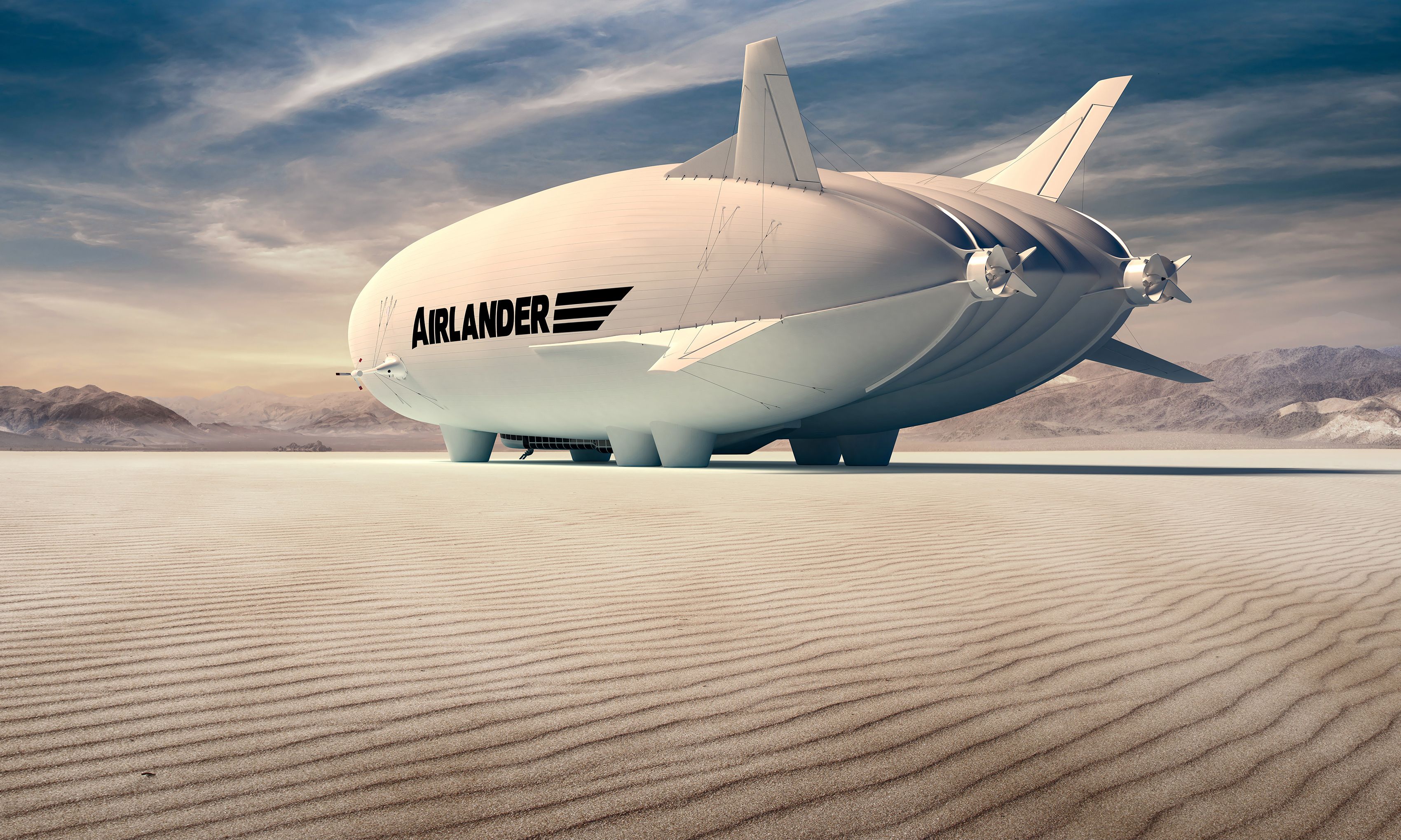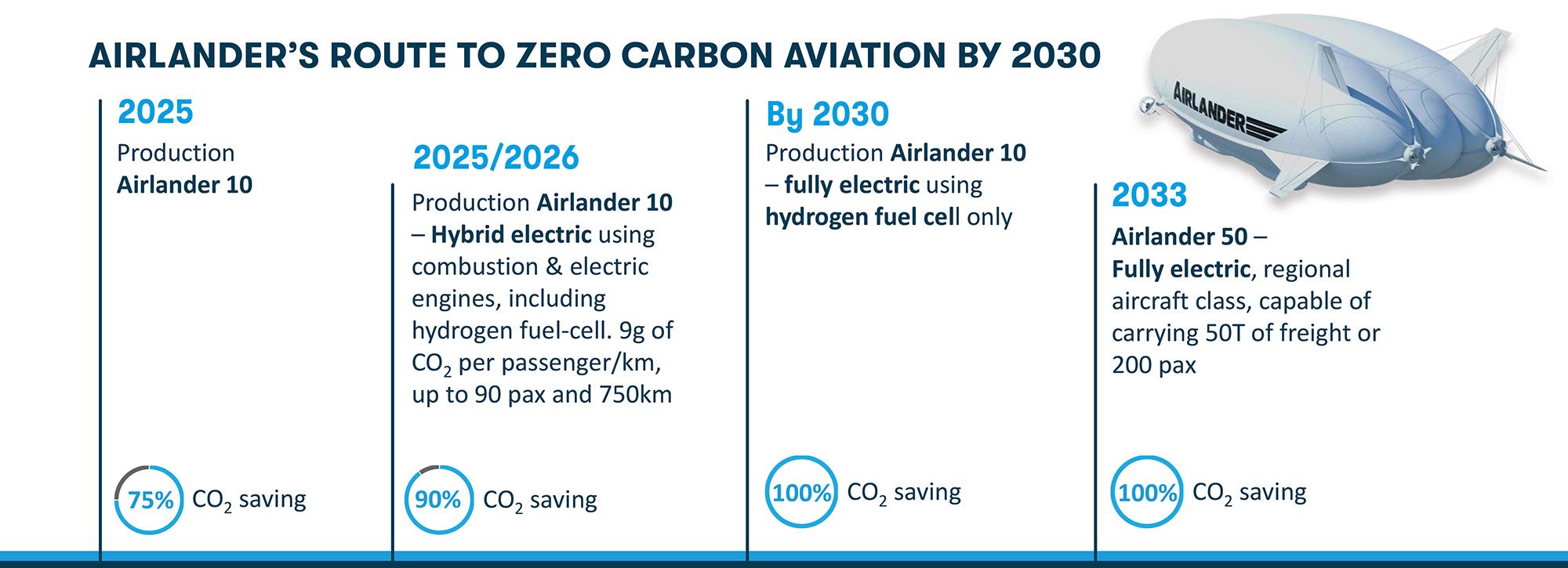Hybrid Air Vehicles (HAV) has had a busy summer with its Airlander 10 program. With momentum gaining with the airship, Simple Flying took the opportunity to catch up with HAV's Commercial Business Development Director, George Land, about the anticipated market for the vehicle.
Standing out
The strides made with the HAV Airlander 10 project were showcased at the Farnborough Airshow in June. Notably, Air Nostrum became the launch customer, reserving a fleet of 10 units of the airship. The same week, it was announced that Collins Aerospace produced a prototype electric motor for the vessel, offering 500 kilowatts of electric power.
New electric aviation programs were in abundance at the airshow. Yet, visually and logistically, the Airlander 10 will hold a distinct presence within the market. None of the budding projects look like the aircraft, and none quite operate the same way.
The UK-built ship first flew as the HAV 304 in 2012 but has remained a prototype since. The fate is set to change as the goal is for the Airlander 10 airship to become the world's first zero-emissions aircraft. It will initially transition to hybrid in 2026 before the rear engines are replaced with Collins' 500-kilowatt components by the time the 2030s are in full swing. Nonetheless, even with the base kerosene-powered model, emissions are 80-90% lower than a similarly sized aircraft.
Regional efficiency
With the likes of Air Nostrum on board, we can expect to see the aircraft make waves in the regional scene in the coming years. Air Nostrum currently holds a fleet of CRJ narrowbodies and ATR-72 turboprops. HAV highlights that its airship is designed to provide a sustainable solution and open new transport networks to offer quick growth options for its customers. With several European countries implementing ambitious mandates for the decarbonization of short-haul air travel, HAV sees an opportunity for its Airlander 10 aircraft.
Efficiency is core to the business model. The Airlander's helium-filled hull generates lift to enable service with minimal infrastructure and unlocking plenty of power. Moreover, the customizable payload module offers an abundance of cargo and passenger capacity, increasing flexibility. In operation, the type combines lift helped by the helium-filled hull and propulsion from the hybrid electric motor to allow it to achieve a maximum altitude of 20,000 feet (6,096 meters).
Airlander 10 is an inherently multi-role aircraft. It has a number of different applications, but the overall approach to all markets is to make a civil-certified platform that's suitable for passenger transport operations. The company emphasizes that clients can adapt the cabin of the aircraft according to whatever the role is. Whereas the prototype was more of a military aircraft, the aircraft is a commercial unit that could be adapted to military purposes.
Stay informed: Sign up for our daily and weekly aviation news digests.
Luxury travel
In the commercial field, there are three main markets. The interest from Air Nostrum is one example of one of the sectors - regional passenger services. Meanwhile, the build of the plane means it's also a natural fit for another market - cargo.
The third market is the most distinctive - luxury tourism. This initiative sees the aircraft being utilized like a small cruise ship in the sky.
“The cabin is so sufficiently spacious that 16 People can actually live on board. They've got bedrooms at the rear of the cabin, and a living and dining area at the front. The aircraft can take off a land from any unprepared flat surface, including water, and it's got a 2,000 nautical mile range. So, if you think about those characteristics - a big cabin that you can pretty much do what you like with, the ability to land pretty much anywhere that's flat, and the capability to go a really long way - it gives you a really flexible platform for doing the sort of tourism that might involve taking off from the coast where maybe there's a holiday resort and taking the guests inland to see natural or archeological sites that are hard to get to with other platforms. However, doing so in comfort in a cabin with massive windows that enables you to look out.”
The aircraft cruises at a relatively slow speed and can slow right down if a passenger wants to view something. Therefore, it gives those on board an ideal viewing platform.
“You've got some of the characteristics of a helicopter, but much more comfort, much longer range, and much more space. We've got people who want to fly in the polar regions, we've got people who want to fly in the Arabian desert, we've got people who want to fly down the Amazon River. There's no real sort of geographical constraint as all parts of the world and all climates can really exploit that basic concept of a luxury cabin that you can live on board. We've got some variations on the same, which are just for day use. So, you know, if you wanted to take a group of people in comfort and luxury for a sort of day cruise, then we can put more seats and still have a high level of comfort. You've got an enormous level of versatility in what you can do with the aircraft.”
Plenty of potential
The initial interest in the Airlander 10 program was from the luxury travel market. However, HAV began identifying opportunities across the regional and cargo scene, especially with the sustainability benefits to be had. Regardless of the application, the airship will provide a unique role across the aviation spectrum.
What are your thoughts about Hybrid Air Vehicle’s progress with the Airlander 10 program? What do you make of the overall plans of the company? Let us know what you think of the firm and its operations in the comment section.


